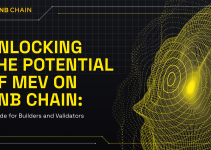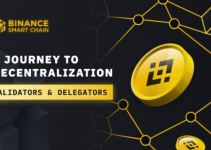Table of Contents

Special thanks to Xterio and Altlayer for their review and meticulous edits. Your expertise and knowledge in the infrastructure and games are highly appreciated.
Understanding the Xterio Games L2
Xterio L2 is engineered to become the leading Gaming Layer 2 and is designed to meet the growing needs of global Web3 gamers. It serves hundreds of millions of players by providing efficient, secure, permissionless, and customizable solutions for on-chain transactions within the Xterio ecosystem.
Xterio L2 utilizes OPSTACK as its technical solution and is a key member of the Optimism Superchain. Its underlying Layer 1 are ETH and BNB Smart Chain (BSC).
Xterio L2 was first deployed on BSC in April 2024. To date, it has processed over 80 million transactions and boasts more than 8 million on-chain wallet addresses. Looking ahead, it will provide on-chain security for nearly 50 games within the Xterio ecosystem. Currently, three games are poised for launch: Palio, Age of Dino, and Overworld. Each game has significant market anticipation. Age of Dino and Overworld had successful NFT sales, while Palio reached over a million users shortly after launch. Age of Dino, a mobile game, garnered over 300,000 users from its initial release.
As a gaming-dedicated chain, Xterio L2 needs to solve the following challenges that affect game experience.
- L2 Scaling and Cost: High L2 costs create friction for gamers unfamiliar with Web3. Game developers must absorb these fees for seamless experiences, or risk losing players. Xterio L2 must offer gasless experience to empower developers to attract mainstream audiences by paying gas for gamers.
- Decentralization: While L2s improve efficiency, they can potentially create centralized points of control. The Xterio L2 needs robust mechanisms to ensure decentralization, preventing centralized entities from influencing game outcomes or asset ownership. This will foster trust and fairness within the Xterio gaming ecosystem.
- Cross-Chain Compatibility: Enabling assets and data to flow seamlessly between different blockchains (e.g. Cross L2s on BSC or from L2 to BSC/ETH) is crucial for a vibrant crypto ecosystem.
The security of Xterio L2 is underpinned by approximately $4 billion (around 1.3 million ETH) in TVL on Eigenlayer. Shortly after going live on the Eigenlayer mainnet, Xterio MACH AVS was deployed and became the first gaming actively validated services (AVS) within the Eigenlayer ecosystem. Xterio L2 will adopt the cross-chain (BNB Chain to Ethereum) re-staking AVS to provide the solution.
- Stage 1: L2 on the BSC is a feasible solution to reduce the cost of L2 transactions. The low-fee allows game developers to sponsor players’ transaction costs. At the same time, the MACH AVS on Ethereum can provide the fast finality to streamline the whole transaction lifecycle to reduce the finality time of L2 transactions.
- Stage 2: In the next stage, the MACH AVS can provide interoperability among different L2s to allow gamers to transfer their assets from one game to another, which is a foundation of the game metaverse ecosystem.
- Stage 3: Finally, the decentralization of sequencers of BSC L2 can also be implemented via AVS. By having a decentralized sequencer network run as an AVS a malicious or unavailable sequencer can be kept in check by requiring the sequencer to bring economic collateral in the form of restaked assets. The economic collateral can be slashed to provide economic security.
Stage 1: Fast Finality of Game L2
Optimistic Rollup Finality
Optimistic rollups rely on centralized sequencers to order transactions, introducing an element of trust since the sequencer has the potential to misbehave. While initial confirmations (soft finality) can happen quickly (2-3 seconds), users must wait longer (1-3 minutes) for the transaction data to be included on the BSC mainnet (Layer 1) to achieve true finality and guarantee that the transaction cannot be reversed. In the case of Ethereum, this can take up to 12-13 mins.
Source: altlayer
Game L2 Challenges
As mentioned above, in most optimistic rollups, after 1-3 minutes, the sequencer batches the transactions processed so far and pushes them to the underlying Layer 1 using calldata/blob. The Layer 2 transaction now has the same finality as the Layer 1 block that included it in a batch, and this is referred to as “hard finality”.
Source: l2beat
However, this delay is unacceptable for use cases demanding rapid interaction, such as on-chain games. Gamers expect near-instant feedback, and waiting minutes for in-game transactions to be confirmed creates a frustrating experience that will likely cause them to abandon the game entirely.
BSC L2 Fast Finality with MACH AVS
Xterio L2 utilizes Altlayer designed MACH AVS, an AVS that leverages EigenLayer’s restaking mechanism to build a decentralized network that validates optimistic rollups. Block validation is done by verifying that a new rollup state is indeed the result of applying the state transition function on an ordered set of transactions proposed by the sequencer and a previously valid rollup state. When an invalid block is detected, MACH operators will raise an alert, and if enough operators agree on the alert, then it can be pushed upstream to interested clients such as dApps. Upon receiving the alert, a client (that subscribes to MACH’s services) can act upon it to ensure that the invalid state update is rejected as early as possible.
As a fast finality AVS, MACH offers the following core services to end-users on Optimistic rollups:
- Faster confirmation for rollup transactions,
- Crypto-economic security to detect any malicious network participants,
- Decentralized validation of rollup states.
Users, Dapps, and other services can avail MACH’s services through an RPC endpoint that reports if a certain rollup block is considered final. This RPC endpoint can be integrated into any Dapp running on the rollup and would allow for faster and more reliable transaction confirmations. By tapping into the economic guarantees provided by MACH, Dapps can safely update the contract state in the UIs and frontends, offering a better and more reliable UX.
MACH will also be helpful for exchanges, bridges, lightweight explorers, and other ancillary services needing streamed access to rollup states and blocks to seamlessly offer their products and services. By tapping into MACH, these providers can offer faster service to end-users. For example, an exchange or a liquidity-based bridge may not need to wait for 7 days to allow a customer to withdraw their assets from the rollup to BSC.
Each transaction on L2 is considered by default invalid, and hence needs to be replayed. As a result, the rollup operator feeds transaction data directly to the MACH network which in turn re-executes the transaction and reaches consensus on the validity of the proposed state by the rollup operator. Users do not need to wait for 1-3 mins to confirm the transactions on BSC.
Stage 2: BSC L2 Interoperability validated by MACH AVS
It is possible that Xterio will have many instantiated rollups for different popular games, It would be ideal to have one bridge between every two rollups that use the same DA layer. The users can make cross-chain transactions (which usually means cross-game) much faster.
Source: altlayer
Upcoming Stage 3
And in stage 3, Xterio will implement the decentralization of sequencer, which will be covered in the upcoming case study.
The Benefits of this Architecture
Gaming-dedicated chain is the foundation of on-chain games, and it is critical for gaming experience. With BSC’s security and efficiency and MACH AVS’s faster finality feature:
- The cost of L2 on BSC can be extremely affordable, making it possible for game developers to sponsor gas costs for gamers and thereby offer a gasless experience.
- With fast finality and validation by MACH, on-chain interactions within games can have fast economic finality within seconds.
- MACH can serve as an interoperability layer for different L2s on BSC and allow for faster cross-rollup asset transfers.
- The decentralization of the L2 sequencer secured by re-staking AVS can also mitigate issues arising from centralized sequencers, which in turn will make the L2 more transparent,fair and reliable.


